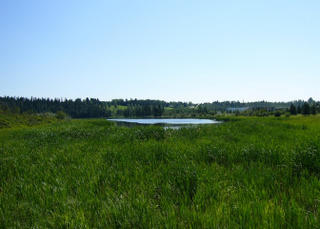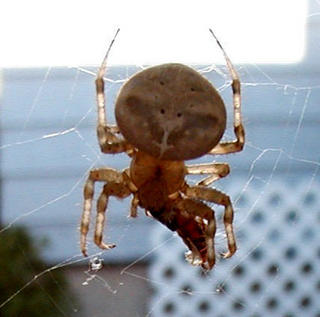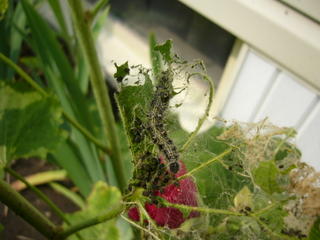I found myself doing some casual grazing on the weekend. You see, we're heading into nut season in Central Alberta. Yes, we do have naturally occurring nut trees (or shrubs, rather) here, although they seem to be a bit of a surprise even to long-time residents of the area.
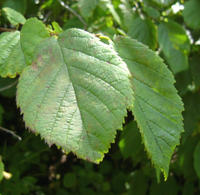
Beaked Hazelnut
(Corylus cornuta) is a fairly common understory plant in the Aspen Parkland, but it's more common slightly north of us than it is here in Red Deer. It grows one to three metres tall and has elliptic, toothed leaves (click on the photo to make it bigger) that may remind you of an alder. Hazelnut leaves tend to be slightly larger than those of the alder, though (4 - 10 cm).
I'd guess that one of the reasons Beaked Hazelnut isn't better known is that the nuts aren't in plain sight.

The fruits grow in pairs (though often, as here, one of the pair doesn't fully develop) and hide in long, beaky-looking bracts that give the plant its common name. These bracts are covered in small, prickly hairs, and that can make collecting the nuts a bit of a challenge. You might want to wear gloves if you have sensitive skin.
Once you strip off the bract you find that the actual nut looks very much like the familiar Christmas hazelnut.
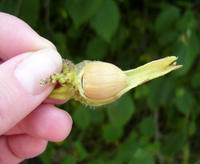
It's a fair bit smaller than its cousin, as you can see here, but every bit as edible. It's possible to roast wild hazelnuts, but I prefer to snack as I go. The thin shells are easily cracked, and the small kernel is pretty tasty.
You can tell by the still-green bracts in the pictures that the hazelnuts aren't quite fully ripe yet. The main problem with collecting wild hazelnuts is that it gets much harder to find them as they ripen. The covering bracts turn brown like dead leaves, and when the nuts fall off the bush they become almost invisible on the forest floor.
The other reason that ripe nuts are hard to find is that they're a favourite food of many birds and rodents. It can be hard to get much of a supply when you're trying to compete with the Blue Jays and the Red Squirrels.
As always, when looking for wild foods be sure the area you're collecting in hasn't been treated with pesticides or other chemicals. Never collect in protected areas, and never eat anything unless you're absolutely sure you've identified it correctly.
Happy grazing!
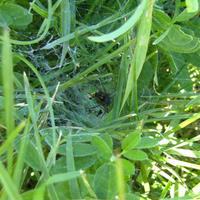 I'll leave you with a look at a Grass Spider (Agelena naevia... or Agelenopsis, depending on the source you check) I saw in the Sanctuary the other day. Grass Spiders are funnel web weavers. They make trampoline-like webs that end with a funnel-shaped opening. The spider waits in the funnel's hole, and when it feels the vibration of an insect on the web it races up and grabs it. As the name implies, Grass Spiders are usually found in grassy fields but can also be seen in hedges and other vegetation occasionally.
I'll leave you with a look at a Grass Spider (Agelena naevia... or Agelenopsis, depending on the source you check) I saw in the Sanctuary the other day. Grass Spiders are funnel web weavers. They make trampoline-like webs that end with a funnel-shaped opening. The spider waits in the funnel's hole, and when it feels the vibration of an insect on the web it races up and grabs it. As the name implies, Grass Spiders are usually found in grassy fields but can also be seen in hedges and other vegetation occasionally.



